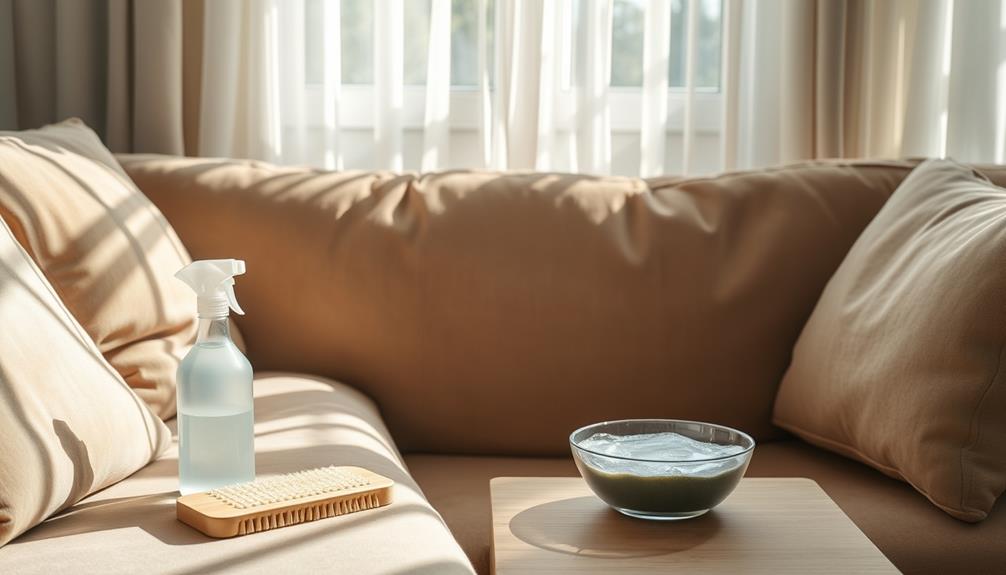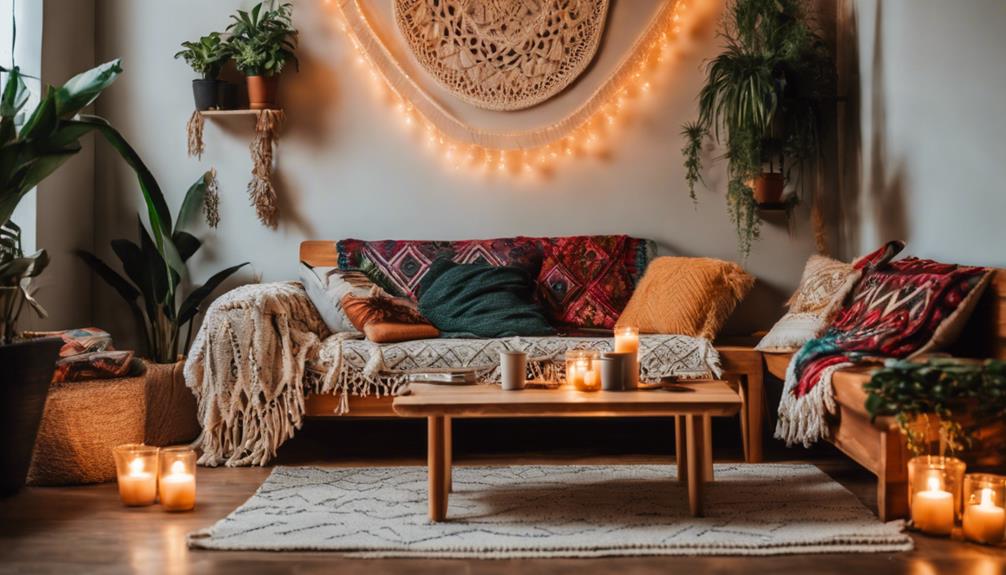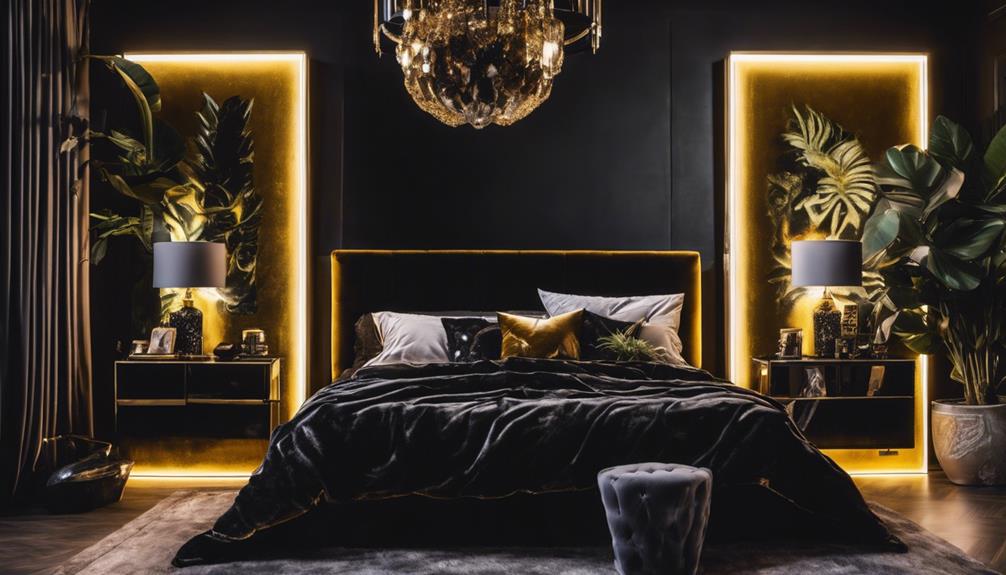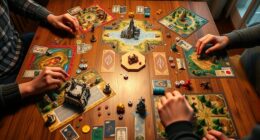If the fan is spinning but there is no airflow, there could be several potential issues at play. Begin by checking for wiring problems; loose connections or damaged wires may be causing a disruption in power. Next, examine the motor for any damage or a faulty capacitor. Additionally, dirty blades or clogged filters could be preventing airflow, so be sure to give them a thorough cleaning. Keep an eye out for bent or loose blades that may be causing imbalance. Finally, environmental factors such as humidity or dust buildup could significantly impact the fan’s performance. If you’re looking for guidance on what to do next, you can explore more solutions to help your fan operate efficiently once again.
Key Takeaways
- Check for dust buildup on fan blades, as it can significantly reduce airflow efficiency.
- Inspect air filters for clogs; replace or clean them to ensure unobstructed airflow.
- Verify that the fan blades are straight and balanced to maintain optimal performance.
- Ensure the motor is functioning properly; test for resistance and check the capacitor.
- Examine for environmental factors like high humidity or extreme temperatures affecting performance.
Wiring Issues
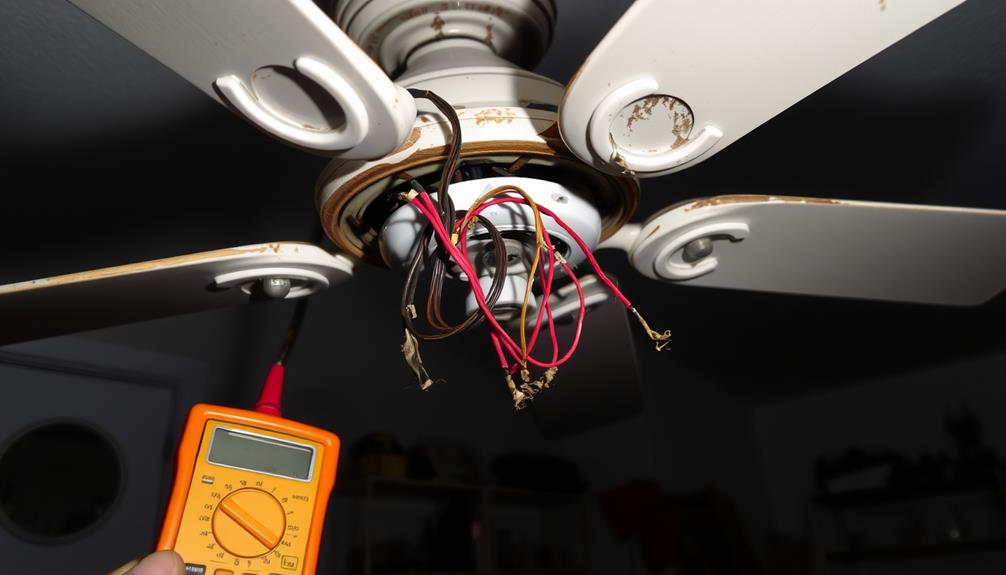
When troubleshooting fan airflow problems, wiring issues are often at the forefront of potential culprits. Start by inspecting the power supply wiring for loose connections or damage; securing or replacing faulty wiring is vital. Next, check the internal wiring of the fan for any frayed or damaged wires that may be impeding proper airflow. It’s also important to consider the ceiling fan blade materials as they can affect the airflow. Blades made of lighter materials tend to move more air, whereas heavier materials may impede airflow. Additionally, ensuring the blades are properly balanced and adjusted can also impact the fan’s airflow performance.
Next, check the motor wiring; any visible damage or loose connections can hinder performance, so rewire or replace as necessary.
Don't forget to verify the speed control wiring connections—fixing or reinstalling them can resolve airflow issues.
Additionally, examine the switch wiring; replacing faulty switches guarantees your fan operates correctly.
Use a multimeter to check continuity and voltage in the wiring, as this can reveal hidden problems.
Repair or replace any damaged wiring to restore your fan's operation and improve airflow efficiency.
Motor Malfunctions
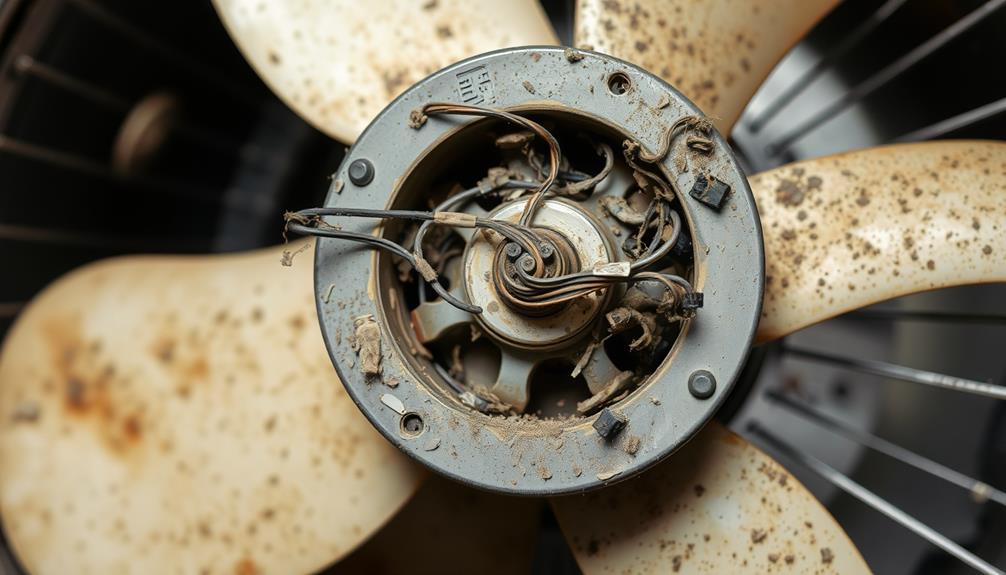
Motor malfunctions can severely impact your fan's performance and airflow. If you hear unusual noises or notice overheating, it's time to investigate.
First, check that the fan is plugged in and receiving power. Next, inspect the motor for visible damage, such as burnt wires or damaged capacitors.
Using a multimeter, test the motor windings for resistance; if they're out of spec, you may have a problem. Don't forget to verify the motor capacitor's functionality—replace it if necessary.
Remember, overloading or power surges can lead to burnout, so monitor your power supply. If issues persist after troubleshooting, you might need to replace the motor altogether.
Regular maintenance is essential for keeping your fan running smoothly.
Fan Airflow Problems
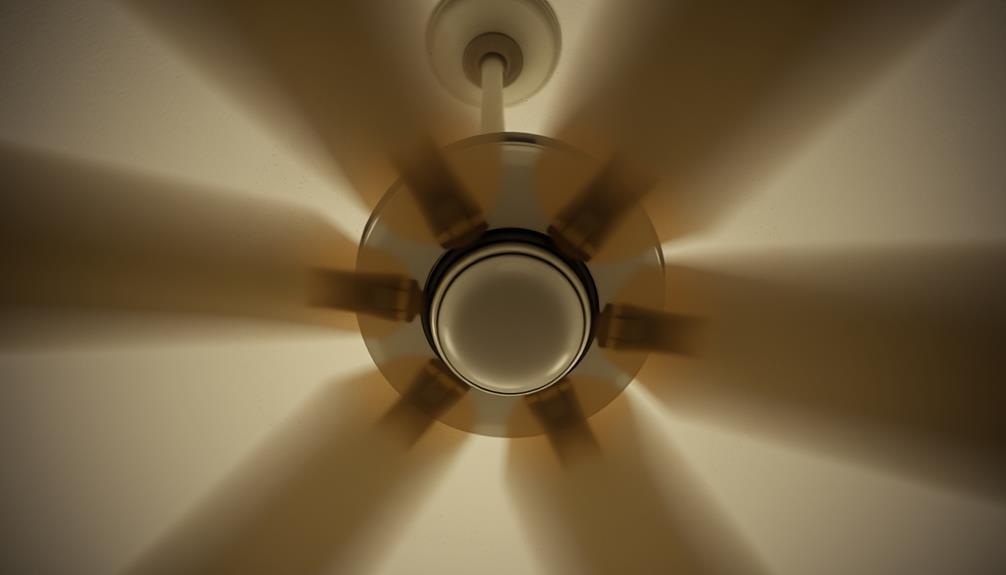
Airflow problems can greatly diminish your fan's effectiveness, leaving you feeling less comfortable than you'd like. To maintain peak airflow, check for these common issues:
| Issue | Solution |
|---|---|
| Dust buildup on blades | Regularly clean blades with a damp cloth. |
| Incorrect spinning direction | Adjust settings to guarantee correct rotation for the season. |
| Clogged air filters | Clean or replace filters frequently to avoid restriction. |
Additionally, inspect fan blades for damage or looseness. Cracked or warped blades can hinder performance, so address any issues you find. Keeping your fan clean and well-maintained will help guarantee you enjoy maximum airflow and comfort throughout its use.
Capacitor and Filter Maintenance

Maintaining the capacitor and filters of your fan is essential for ensuring it operates effectively. A faulty capacitor can prevent your fan motor from reaching necessary speeds, so check for visible damage like bulging or leaking.
Use a multimeter to measure capacitance and voltage against manufacturer specs. If it's faulty, follow these steps:
- Disconnect power and discharge the capacitor.
- Replace it with a new one.
Regularly clean or replace air filters to maintain peak airflow; turn off the fan, remove the grill, and access the filters.
Loose or Damaged Fan Blade

If you've noticed your fan isn't performing as it should, inspecting the blades for looseness or damage is essential. Misaligned blades can create air turbulence, leading to decreased airflow.
Start by visually checking the position of each blade; they should be straight and evenly spaced. If you find any bent blades, gently realign them to restore proper function.
Also, be on the lookout for any wobbles or excessive noise, which might indicate unbalanced blades. In some cases, you may need to add small weights or make adjustments to achieve balance.
Taking the time to address these issues can greatly improve your fan's efficiency and airflow, ensuring it works effectively when you need it most.
Dust and Debris Accumulation
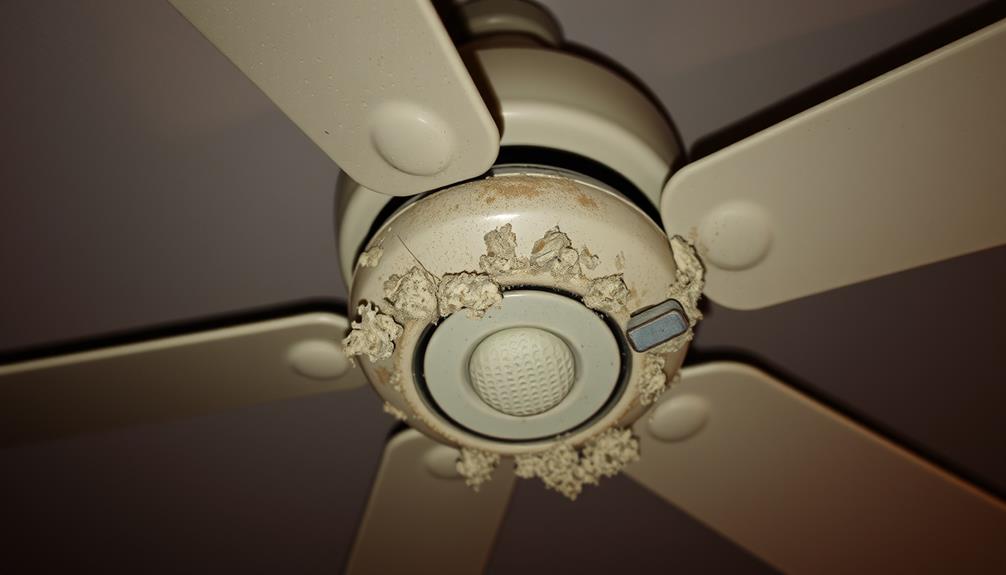
Over time, dust and debris can accumulate on your fan's blades and motor, considerably restricting airflow. If you notice reduced performance, it's crucial to clean your fan regularly.
Here are three key areas to focus on:
- Blades: Wipe down the blades with a damp cloth to remove dust buildup. This helps maintain ideal air circulation.
- Motor: Inspect the motor for dust that could hinder its operation. Use a soft brush or compressed air to clean it gently.
- Grill and Housing: Don't forget to clean the grill and the surrounding housing. Dust can accumulate here, reducing overall efficiency.
Environmental Factors Affecting Performance
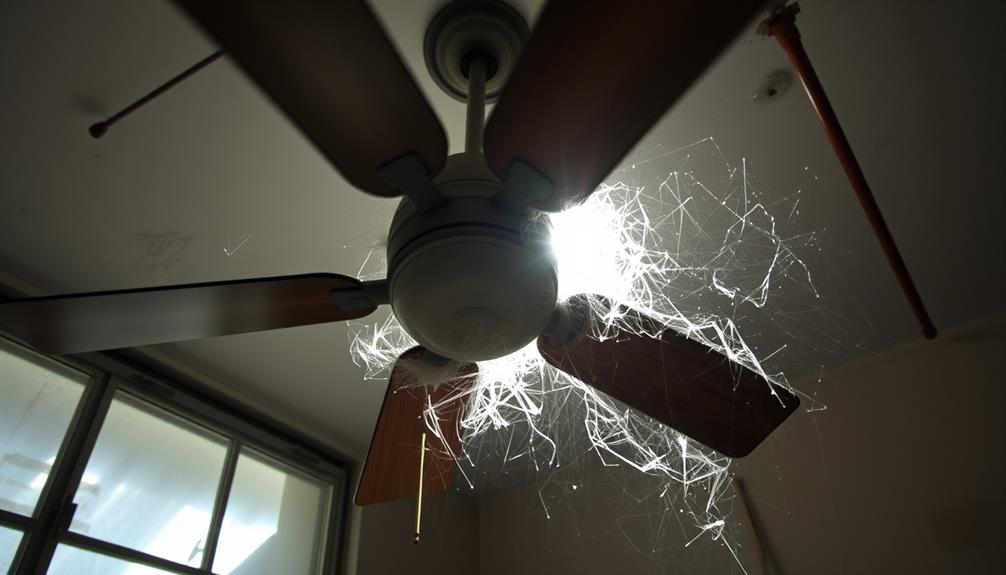
Environmental factors can considerably impact your fan's performance, often leading to reduced efficiency and airflow.
High humidity levels can cause moisture buildup, affecting both the motor and electrical components. If your fan's located near windows or doors, outdoor pollutants and debris can infiltrate the system, obstructing airflow.
Extreme temperatures, whether too hot or too cold, can strain the motor and decrease its lifespan. Additionally, poor insulation can lead to drafts, making it harder for your fan to maintain desired air circulation.
Regular maintenance, including cleaning and inspections, can help mitigate these environmental impacts and guarantee peak performance. Keeping your fan in a controlled environment is essential for maintaining its efficiency and longevity.
Frequently Asked Questions
How Can I Tell if My Fan Is Energy-Efficient?
To tell if your fan's energy-efficient, check its energy rating label, look for features like variable speeds or timers, and assess its performance in cooling areas effectively while consuming minimal electricity.
What Are the Signs of a Failing Fan Motor?
You might think your fan's just noisy, but if it's overheating or making strange sounds, it's likely a sign of motor failure. Check for visible damage and test the motor to verify it's functioning properly.
Can a Fan Be Repaired, or Should I Replace It?
You can often repair a fan if you identify the issue, like wiring or motor problems. However, if the damage is extensive or parts are unavailable, replacing it may be the better option.
How Often Should I Service My Ceiling Fan?
To keep your ceiling fan in tip-top shape, you should service it at least twice a year. Regular cleaning and maintenance prevent dust buildup and guarantee ideal airflow, so don't let it gather dust!
What Is the Best Way to Store a Fan When Not in Use?
When you store a fan, clean it thoroughly to remove dust. Disassemble removable parts, wrap the fan in a protective cover, and keep it in a cool, dry place to prevent damage during storage.
Conclusion
To sum up, if your ceiling fan spins but fails to deliver that invigorating breeze, don't fret! By addressing wiring issues, checking for motor malfunctions, and keeping blades and filters clean, you can restore its performance. Think of it like a team: when every part works together, the result is a comfortable oasis in your home. So, roll up your sleeves and tackle those issues—your fan's revival is just a few steps away!

